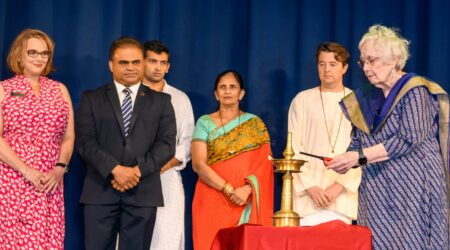By Bhaswati Bhattacharya
Today, popular quotes on social media and twenty-something interviews espouse that we are broken. Their tunes sing about their lack of self-control, how they never learned how to build relationships, communicate with people, write letters, and sleep, eat or move. They have no knowledge of breath, no restorative coping, when to drop into a yoga practice, how to interrupt a panic attack, no way to self-diagnose warning signs.
Society acknowledges them for their loss, and celebrates their courage to openly ask for help. We spend taxpayer dollars for their mental health, emergency medical treatments, and repair the damages they do to property and public places due to their anger and ignorance. We apologize for this lack that they have. And we make problems in mental health both a shame and a tragedy rewarded with confession.
Someone needs to burst the bubble. When people reveal what they did not receive, it is not only a cry for help. It is an accusation that society which promises to take care of them and their basic rights is not doing it. Sometimes the cries try to convince us that their truth is everyone’s truth, that their demands must be met. But mostly today the cries are clearly revealing the guilt in developed societies from those who have time to listen, as they are the ones not struggling to survive – these “developed” elite exist largely due to ancestors who abused, raped, stole from, swindled, pillaged, and lived off the slavery and servitude of the disenfranchised and unfortunate.
The unfortunate look to the elite who hold the reins of power, more materially successful and living life easily. The disenfranchised seek reparation in sympathy, compassion, and support.
Ayurveda whispers that Bharat’s children have lived through cycles of such loss again and again for millennia and have learned about real wealth. Crusaders, invaders, conquerors, and terrible greed led every civilization to Bharat to take from its seemingly endless wealth. They stole and stole, but could not steal the real wealth.
Few conquerors try to understand where the endless fountain of wealth is rooted. Sanatana dharma is rooted in the immaterial wealth of wisdom, love, and service.
Bharat’s wisemen learned through the cycles of tortures, such as the famines that the British purposely indicted on the Bengali, nothing short of a holocaust, or the mass killings in Punjab from the late 1800s, as well as endless rapes of women, children and mothers by light-skinned men swollen with power in their red coats and feathered hats.
Sanatana, the endless wisdom, teaches about vikaas, or development. Real development is understanding what wealth is.
Wealth is strength of body along with strength of mind. Wealth is good health. Wealth is access to good food. Wealth is filling one’s own belly and having enough to fill another’s. Wealth is wisdom to look inward toward inner development.
When one grows up in a family that has purposefully handed down wisdom generation to generation in all its members, and behaved well to all neighbors, spreading wisdom, love, and service all around them, the family becomes a “good family.”
In the past century, most people of Bharat did not grow up in ostensibly rich families, due to colonial thieves that overtook most of the subcontinent. Some of those thieves were Bharatiya, traitors of their own heritage, seduced by their five senses to prioritize the hedonism offered by the west.
Those who were materially wealthy were often corrupted by greed. Wealth got a bad reputation because an individual’s greed for power disturbs the ecosystem and destroys true leadership. Bharat’s children quickly learned to hide their wealth, leaving the outside of the home looking shabby while the inner chambers were opulent. This small portion who learned to hide lived well, not ostentatiously, and kept their wealth. The material wealth stayed in the family because the family understood the true roots of the wealth — inner grounding and attitudes that housed deep inner wisdom. Gold jewelry was not for flaunting wealth; they were worn for building immunity. Drinking from silver cups was not ostentatious; it was for cooling the pitta and providing deep anti-microbial therapy without side effects. Bronze dishes were not flamboyant; they are anti-toxic and signal food that should not be eaten. Pearls were not showy; they were used to cool the body during summers and during recovery from pitta diseases.
Children who grew up in these families were systematically and with priority taught by each member exactly those things that would develop inner wisdom. Families used inter-generational bonds to teach erudite skills, how to master the basics of being human, how to resolve problems in health, relationships, and getting around in the world. They taught deep love and intimacy without violation of boundaries. The basics of movement, nourishment, focus, exploration, play, rest and joy were part of daily rituals and family events. This was part of being in a traditional Bharatiya family.

The South Asia Times Columnist Dr. Bhaswati Bhattacharya is a Fulbright Specialist 2018‐2023 in Public Health and Clinical Asst Professor of Medicine, Weill Cornell Medical College, New York. Her bestselling book Everyday Ayurveda is published by Penguin Random House.
bhaswati@post.harvard.edu/
www.drbhaswati.com












